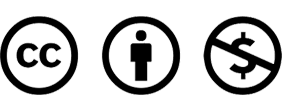General Article
United Nations. 68% of the world population projected to live in urban areas by 2050, says UN | UN DESA | United Nations Department of Economic and Social Affairs. United Nations [Online], 2018, May 16. Available at: https://www.un.org/development/desa/en/news/population/2018-revision-of-world-urbanization-prospects.html [Accessed 11/06/2024].
The World Bank. Urban Development-Overview. World Bank [Online], 2023. Available at: https://www.worldbank.org/en/topic/urbandevelopment/overview [Accessed 11/06/2024].
A. Grubler, X. Bai, T. Buettner, S. Dhakal, D.J. Fisk, T. Ichinose, J.E. Keirstead, G. Sammmer, D. Satterthwaite, and N.B. Schulz, Urban energy systems. 2012, Global Energy Assessment: Toward a sustainable future, cambridge: cambridge University Press, 1307-1400.
10.1017/CBO9780511793677.024K.C. Seto, S. Dhakal, A. Bigio, H. Blanco, G.C. Delgado, D. Dewar, L. Huang, A. Inaba, A. Kansal, and S. Lwasa, Human settlements, infrastructure and spatial planning. 2014, In climate chage 2014: Mitigation of climate change. IPCC working group III contribution to AR5. cambridge university Press.
C. Kennedy, J. Cuddihy, and J. Engel‐Yan, The Changing Metabolism of Cities. Journal of Industrial Ecology. 11(2) (2007), pp. 43-59. DOI: https://doi.org/10.1162/jie.2007.1107.
10.1162/jie.2007.1107S. Niza, L. Rosado, and P. Ferrão, Urban Metabolism. Journal of Industrial Ecology. 13(3) (2009), pp. 384-405. DOI: https://doi.org/10.1111/j.1530-9290.2009.00130.x.
10.1111/j.1530-9290.2009.00130.xX. Cui, X. Wang, and Y. Feng, Examining urban Metabolism: A material flow perspective on cities and their Sustainability. Journal of Cleaner Production. 214 (2019), pp. 767-781. DOI: https://doi.org/10.1016/j.jclepro.2019.01.021.
10.1016/j.jclepro.2019.01.021S. Barles, Society, energy and materials: The contribution of urban metabolism studies to sustainable urban development issues. Journal of Environmental Planning and Management. 53(4) (2010), pp. 439-455. DOI: https://doi.org/10.1080/09640561003703772.
10.1080/09640561003703772E.H. Decker, S. Elliott, F.A. Smith, D.R. Blake, and F.S. Rowland, Energy and Material Flow Through the Urban Ecosystem. Annual Review of Energy and the Environment. 25(1) (2000), pp. 685-740. DOI: https://doi.org/10.1146/annurev.energy.25.1.685.
10.1146/annurev.energy.25.1.685S. Cao, Y. Lv, H. Zheng, and X. Wang, Challenges facing China's unbalanced urbanization strategy. Land Use Policy. 39 (2014), pp. 412-415. DOI: https://doi.org/10.1016/j.landusepol.2013.12.004.
10.1016/j.landusepol.2013.12.004J.D. Céspedes Restrepo and T. Morales-Pinzón, Urban metabolism and sustainability: Precedents, genesis and research perspectives. Resources, Conservation and Recycling. 131 (2018), pp. 216-224. DOI: https://doi.org/10.1016/j.resconrec.2017.12.023.
10.1016/j.resconrec.2017.12.023P. Ferrão and J.E. Fernández, Sustainable Urban Metabolism. 2013, MIT Press.
10.7551/mitpress/8617.001.0001R. Clift, A. Druckman, I. Christie, C. Kennedy, and J. Keirstead (n.d.), Urban Metabolism: A review in the UK context. 83. 2015.
Y. Zhang, Urban Metabolism: A review of research methodologies. Environmental Pollution. 178 (2013), pp. 463-473. DOI: https://doi.org/10.1016/j.envpol.2013.03.052.
10.1016/j.envpol.2013.03.05223619057D. Browne, B. O'Regan, and R. Moles, Assessment of total urban Metabolism and metabolic inefficiency in an Irish city-region. Waste Management. 29(10) (2009), pp. 2765-2771. DOI: https://doi.org/10.1016/j.wasman.2009.05.008.
10.1016/j.wasman.2009.05.00819527925S. Maranghi, M.L. Parisi, A. Facchini, A. Rubino, O. Kordas, and R. Basosi, Integrating urban Metabolism and life cycle assessment to analyze urban Sustainability. Ecological Indicators. 112 (2020), 106074. DOI: https://doi.org/10.1016/j.ecolind.2020.106074.
10.1016/j.ecolind.2020.106074A. Wolman, The Metabolism of Cities. Scientific American. 213(3) (1965), pp. 178-193.
10.1038/scientificamerican0965-178B.S. Reddy, Metabolism of Mumbai-expectations, impasse and the need for a new beginning [Online], Available at: http://oii.igidr.ac.in:8080/xmlui/handle/2275/276 [Accessed 10/06/2024].
M. Dijst, E. Worrell, L. Böcker, P. Brunner, S. Davoudi, S. Geertman, R. Harmsen, M. Helbich, A.A.M. Holtslag, M.-P. Kwan, B. Lenz, G. Lyons, P.L. Mokhtarian, P. Newman, A. Perrels, A.P. Ribeiro, J. Rosales Carreón, G. Thomson, D. Urge-Vorsatz, and M. Zeyringer, Exploring urban Metabolism-Towards an interdisciplinary perspective. Resources, Conservation and Recycling. 132 (2018), pp. 190-203. DOI: https://doi.org/10.1016/j.resconrec.2017.09.014.
10.1016/j.resconrec.2017.09.014G. Lucertini and F. Musco, Circular Urban Metabolism Framework. One Earth. 2(2) (2020), pp. 138-142. DOI: https://doi.org/10.1016/j.oneear.2020.02.004.
10.1016/j.oneear.2020.02.004J. Rotmans, M. van Asselt, and P. Vellinga, An integrated planning tool for sustainable cities. Environmental Impact Assessment Review. 20(3) (2000), pp. 265-276. DOI: https://doi.org/10.1016/S0195-9255(00)00039-1.
10.1016/S0195-9255(00)00039-1W. Huang, S. Cui, M. Yarime, S. Hashimoto, and S. Managi, Improving urban metabolism study for sustainable urban transformation. Environmental Technology & Innovation. 4 (2015), pp. 62-72. DOI: https://doi.org/10.1016/j.eti.2015.04.004.
10.1016/j.eti.2015.04.004D. Beloin-Saint-Pierre, B. Rugani, S. Lasvaux, A. Mailhac, E. Popovici, G. Sibiude, E. Benetto, and N. Schiopu, A review of urban metabolism studies to identify key methodological choices for future harmonization and implementation. Journal of Cleaner Production. 163 (2017), pp. S223-S240. DOI: https://doi.org/10.1016/j.jclepro.2016.09.014.
10.1016/j.jclepro.2016.09.014United Nations Changing consumption patterns. Agenda 21. New York: United Nations Department of Public Information, 1993-Google Search. (1992). Retrieved May 22 2021, from Agenda21.doc (un.org).
J. Liu, R. Wang, and J. Yang, Metabolism and Driving Forces of Chinese Urban Household Consumption. Population and Environment. 26(4) (2005), pp. 325-341. DOI: https://doi.org/10.1007/s11111-005-3345-8.
10.1007/s11111-005-3345-8W. Biesiot and K.J. Noorman, Energy requirements of household consumption: A case study of The Netherlands. Ecological Economics. 28(3) (1999), pp. 367-383. DOI: https://doi.org/10.1016/S0921-8009(98)00113-X.
10.1016/S0921-8009(98)00113-XY. Zhang, Z. Yang, and X. Yu. Urban Metabolism: A Review of Current Knowledge and Directions for Future Study. Environmental Science & Technology. 49(19) (2015), pp. 11247-11263.
10.1021/acs.est.5b0306026321071H.C. Moll, K.J. Noorman, R. Kok, R. Engström, H. Throne‐Holst, and C. Clark, Pursuing More Sustainable Consumption by Analyzing Household Metabolism in European Countries and Cities. Journal of Industrial Ecology. 9(1-2) (2005), pp. 259-275. DOI: https://doi.org/10.1162/1088198054084662.
10.1162/1088198054084662R. Harder, M. Dombi, and G.M. Peters, Perspectives on quantifying and influencing household metabolism. Journal of Environmental Planning and Management. 60(2) (2017), pp. 178-203. DOI: https://doi.org/10.1080/09640568.2016.1142864.
10.1080/09640568.2016.1142864D. Wiedenhofer, M. Lenzen, and J.K. Steinberger, Energy requirements of consumption: Urban form, climatic and socio-economic factors, rebounds and their policy implications. Energy Policy. 63 (2013), pp. 696-707. DOI: https://doi.org/10.1016/j.enpol.2013.07.035.
10.1016/j.enpol.2013.07.035S. Geislar, The Determinants of Household Food Waste Reduction. Recovery, and Reuse: Toward a Household Metabolism. (2018). DOI: https://doi.org/10.1016/B978-0-08-100596-5.22448-7.
10.1016/B978-0-08-100596-5.22448-7T.-W. Luo, Z.-Y. Ouyang, X.-K. Wang, H. Miao, and H. Zheng, Dynamics of urban food-carbon consumption in Beijing households. Acta Ecologica Sinica. 25(12) (2005), pp. 3252-3258.
K.J. Noorman and T.S. Uiterkamp, Green Households: Domestic Consumers, the Environment and Sustainability. 2014, Routledge.
10.4324/9781315071091PMC4044425Sustainable consumption and production | Department of Economic and Social Affairs [Online], 2015. Available at: https://sdgs.un.org/topics/sustainable-consumption-and-production [Accessed 25/03/2021].
United Nations Division for Sustainable Development-WSSD Plan of Implementation-Chapter 3 [Online], 2004. Available at: https://www.un.org/esa/sustdev/documents/WSSD_POI_PD/English/POIChapter3.htm [Accessed 25/03/2021].
G. D'Alisa, M.F. Di Nola, and M. Giampietro, A multi-scale analysis of urban waste metabolism: Density of waste disposed in Campania. Journal of Cleaner Production. 35 (2012), pp. 59-70. DOI: https://doi.org/10.1016/j.jclepro.2012.05.017.
10.1016/j.jclepro.2012.05.017S. Caeiro, T.B. Ramos, and D. Huisingh, Procedures and criteria to develop and evaluate household sustainable consumption indicators. Journal of Cleaner Production. 27 (2012), pp. 72-91. DOI: https://doi.org/10.1016/j.jclepro.2011.12.026.
10.1016/j.jclepro.2011.12.026C.A.J. Vlek, Culture, consumption and lifestyles in relation to sustainable development. In S. Zwerver, R. S. A. R. van Rompaey, M. T. J. Kok, & M. M. Berk (Eds.), 1995. Studies in Environmental Science (Vol. 65, pp. 1201-1225). Elsevier. DOI: https://doi.org/10.1016/S0166-1116(06)80152-4.
10.1016/S0166-1116(06)80152-4K. Schanes, K. Dobernig, and B. Gözet, Food waste matters-A systematic review of household food waste practices and their policy implications. Journal of Cleaner Production. 182 (2018), pp. 978-991. DOI: https://doi.org/10.1016/j.jclepro.2018.02.030.
10.1016/j.jclepro.2018.02.030L. Principato, G. Mattia, A. Di Leo, and C.A. Pratesi, The household wasteful behaviour framework: A systematic review of consumer food waste. Industrial Marketing Management. 93 (2021), pp. 641-649. DOI: https://doi.org/10.1016/j.indmarman.2020.07.010.
10.1016/j.indmarman.2020.07.010R. Kok, R.M.J. Benders, and H.C. Moll, Measuring the environmental load of household consumption using some methods based on input-output energy analysis: A comparison of methods and a discussion of results. Energy Policy. 34(17) (2006), pp. 2744-2761. DOI: https://doi.org/10.1016/j.enpol.2005.04.006.
10.1016/j.enpol.2005.04.006M. Petticrew and H. Roberts, Systematic reviews in the social sciences: A practical guide. 2008, John Wiley & Sons.
D. Moher, A. Liberati, J. Tetzlaff, D.G. Altman, and T.P. Group, Preferred Reporting Items for Systematic Reviews and Meta-Analyses: The PRISMA Statement. PLOS Medicine. 6(7) (2009), e1000097. DOI: https://doi.org/10.1371/journal.pmed.1000097.
10.1371/journal.pmed.100009719621072PMC2707599H. Keathley-Herring, E. Van Aken, F. Gonzalez-Aleu, F. Deschamps, G. Letens, and P.C. Orlandini, Assessing the maturity of a research area: Bibliometric Review and proposed framework. Scientometrics. 109(2) (2016), pp. 927-951. DOI: https://doi.org/10.1007/s11192-016-2096-x.
10.1007/s11192-016-2096-xA. Strydom, J.K. Musango, and P.K. Currie, Conceptualizing Household Energy Metabolism: A Methodological Contribution. Energies. 12(21) (2019), 4125. DOI: https://doi.org/10.3390/en12214125.
10.3390/en12214125B.M. Frostell, R. Sinha, G. Assefa, and L.E. Olsson, Modeling both direct and indirect environmental load of purchase decisions: A web-based tool addressing household metabolism. Environmental Modelling & Software. 71 (2015), pp. 138-147. DOI: https://doi.org/10.1016/j.envsoft.2015.05.014.
10.1016/j.envsoft.2015.05.014X. Bai, Industrial Ecology and the Global Impacts of Cities. Journal of Industrial Ecology. 11(2) (2007), pp. 1-6. DOI: https://doi.org/10.1162/jie.2007.1296.
10.1162/jie.2007.1296A.C. Kerkhof, S. Nonhebel, and H.C. Moll, Relating the environmental impact of consumption to household expenditures: An input-output analysis. Ecological Economics. 68(4) (2009), pp. 1160-1170. DOI: https://doi.org/10.1016/j.ecolecon.2008.08.004.
10.1016/j.ecolecon.2008.08.004K.J. Noorman and T. Schoot Uiterkamp, Diagnosing and evaluating household metabolism. Green Households? Domestic Consumers, Environment, and Sustainability. 1998, Routledge.
M.D. Donato, P.L. Lomas, and Ó. Carpintero, Metabolism and Environmental Impacts of Household Consumption: A Review on the Assessment, Methodology, and Drivers. Journal of Industrial Ecology. 19(5) (2015), pp. 904-916. DOI: https://doi.org/10.1111/jiec.12356.
10.1111/jiec.12356J. Liu, M. Wang, C. Zhang, M. Yang, and Y. Li, Material flows and in-use stocks of durable goods in Chinese urban household sector. Resources, Conservation and Recycling. 158 (2020), 104758. DOI: https://doi.org/10.1016/j.resconrec.2020.104758.
10.1016/j.resconrec.2020.104758L. Leray, M. Sahakian, and S. Erkman, Understanding household food metabolism: Relating micro-level material flow analysis to consumption practices. Journal of Cleaner Production. 125 (2016), pp. 44-55. DOI: https://doi.org/10.1016/j.jclepro.2016.03.055.
10.1016/j.jclepro.2016.03.055M. Kissinger and Y. Damari, Household metabolism: Integrating socio-economic characteristics and lifestyles on individual and national scales as a mean for advancing environmental management. Journal of Environmental Management. 279 (2021), 111526. DOI: https://doi.org/10.1016/j.jenvman.2020.111526.
10.1016/j.jenvman.2020.11152633218833S. Geislar, The Determinants of Household Food Waste Reduction, Recovery, and Reuse: Toward a Household Metabolism. 2019, In Encyclopedia of Food Security and Sustainability (pp. 567-574). Elsevier. DOI: https://doi.org/10.1016/B978-0-08-100596-5.22448-7.
10.1016/B978-0-08-100596-5.22448-7C. Hoolohan, M. Berners-Lee, J. McKinstry-West, and C.N. Hewitt, Mitigating the greenhouse gas emissions embodied in food through realistic consumer choices. Energy Policy. 63 (2013), pp. 1065-1074. DOI: https://doi.org/10.1016/j.enpol.2013.09.046.
10.1016/j.enpol.2013.09.046G. Hardadi, A. Buchholz, and S. Pauliuk, Implications of the distribution of German household environmental footprints across income groups for integrating environmental and social policy design. Journal of Industrial Ecology. 25(1) (2021), pp. 95-113. DOI: https://doi.org/10.1111/jiec.13045.
10.1111/jiec.13045T. Baynes, M. Lenzen, J.K. Steinberger, and X. Bai, Comparison of household consumption and regional production approaches to assess urban energy use and implications for policy. Energy Policy. 39(11) (2011), pp. 7298-7309. DOI: https://doi.org/10.1016/j.enpol.2011.08.053.
10.1016/j.enpol.2011.08.053E.G. Hertwich, The Life Cycle Environmental Impacts of Consumption. Economic Systems Research. 23(1) (2011), pp. 27-47. DOI: https://doi.org/10.1080/09535314.2010.536905.
10.1080/09535314.2010.536905D. Padovan, F. Martini, and A.K. Cerutti, Social Practices of Ordinary Consumption: An Introduction to Household Metabolism. Journal of Socialomics. 4(2) (2015), 11.
10.4172/2167-0358.1000119J. Liu, R. Wang, and J. Yang, Environment consumption patterns of Chinese urban households and their policy implications. International Journal of Sustainable Development & World Ecology. 16(1) (2009), pp. 9-14. DOI: https://doi.org/10.1080/13504500902749012.
10.1080/13504500902749012D.P. Jimenez Encarnacion, Understanding Household Food Waste: Setting Data into Context for Effective Eco-feedback [Master's Thesis]. (2017).
L. Dahlén and A. Lagerkvist, Methods for household waste composition studies. Waste Management. 28(7) (2008), pp. 1100-1112.
10.1016/j.wasman.2007.08.01417920857S. Lebersorger and F. Schneider, Discussion on the methodology for determining food waste in household waste composition studies. Waste Management. 31(9) (2011), pp. 1924-1933. DOI: https://doi.org/10.1016/j.wasman.2011.05.023.
10.1016/j.wasman.2011.05.02321705207M. Dombi, A. Karcagi-Kováts, K. Tóth-Szita, and I. Kuti, The structure of socio-economic Metabolism and its drivers on household level in Hungary. Journal of Cleaner Production. 172 (2018), pp. 758-767. DOI: https://doi.org/10.1016/j.jclepro.2017.10.220.
10.1016/j.jclepro.2017.10.220M. Bissmont, K. Sandell, and H.B. Wittgren, Reducing household waste: A social practice perspective on Swedish household waste prevention. 2020, Malmö universitet, & Fakulteten för kultur och samhälle Kan.
L. Leray, M. Sahakian, L. Chakraborty, and S. Erkman, Food Metabolism at the household level: Towards a better accounting of consumption practices. The 11th International Society For Industrial Ecology (ISIE) Socio-Economic Metabolism Section Conference and The 4th ISIE Asia-Pacific Conference. (2014).
B.J. Pearce and M. Chertow, Scenarios for achieving absolute reductions in phosphorus consumption in Singapore. Journal of Cleaner Production. 140 (2017), pp. 1587-1601. DOI: https://doi.org/10.1016/j.jclepro.2016.09.199.
10.1016/j.jclepro.2016.09.199J. Barrett, H. Vallack, A. Jones, and G. Haq, A Material Flow Analysis and Ecological Footprint of York. Stockholm Environment Institute. (2002). DOI: https://doi.org/10.13140/RG.2.1.3258.6085.
G. Zhiying and L. Cuiyan, Empirical Analysis on Ecological Footprint of Household Consumption in China. Energy Procedia. 5 (2011), pp. 2387-2391. DOI: https://doi.org/10.1016/j.egypro.2011.03.410.
10.1016/j.egypro.2011.03.410J. Forkes, Nitrogen balance for the urban food metabolism of Toronto, Canada. Resources, Conservation and Recycling. 52(1) (2007), pp. 74-94. DOI: https://doi.org/10.1016/j.resconrec.2007.02.003.
10.1016/j.resconrec.2007.02.003L.A. Baker, P.M. Hartzheim, S.E. Hobbie, J.Y. King, and K.C. Nelson, Effect of consumption choices on fluxes of carbon, nitrogen and phosphorus through households. Urban Ecosystems. 10(2) (2007), pp. 97-117. DOI: https://doi.org/10.1007/s11252-006-0014-3.
10.1007/s11252-006-0014-3Z. Bai, L. Ma, W. Ma, W. Qin, G.L. Velthof, O. Oenema, and F. Zhang, Changes in phosphorus use and losses in the food chain of China during 1950-2010 and forecasts for 2030. Nutrient Cycling in Agroecosystems. 104(3) (2016), pp. 361-372. DOI: https://doi.org/10.1007/s10705-015-9737-y.
10.1007/s10705-015-9737-yC. Xiong, Z. Guo, S.S. Chen, Q. Gao, M.A. Kishe, and Q. Shen, Understanding the pathway of phosphorus metabolism in urban household consumption system: A case study of Dar es Salaam, Tanzania. Journal of Cleaner Production. 274 (2020), 122874. DOI: https://doi.org/10.1016/j.jclepro.2020.122874.
10.1016/j.jclepro.2020.122874H. Throne-Holst, E. Sto, R. Kok, and H.C. Moll, Household Metabolism in the five cities. (no. 9-2002 ed.) National Institute for Consumer research, Lysaker, Norway. (2002).
A. Carlsson‐Kanyama, R. Engström, and R. Kok, Indirect and Direct Energy Requirements of City Households in Sweden: Options for Reduction, Lessons from Modeling. Journal of Industrial Ecology. 9(1-2) (2005), pp. 221-235. DOI: https://doi.org/10.1162/1088198054084590.
10.1162/1088198054084590A. Carlsson-Kanyama, R. Karlsson, H. Moll, R. Kok, and A. Wadeskog, Household Metabolism in the Five Cities. Swedish National Report-Stockholm. Stockholm Univ. and Swedish Defence Research Agency. (2002).
C. Clark, B.C.M. Gatersleben, H.C. Moll, and R. Kok, Household Metabolism in the five cities [Online], 2003. Available at: https://research.rug.nl/en/publications/household-metabolism-in-the-five-cities-3.
A. Druckman and T. Jackson, The Local Area Resource Analysis (Lara) Model: Concepts, Methodology And Applications. Resolve. (2008), 50.
M. Prášilová, R. Procházková, and P. Varvažovská, Pro-environmental Behaviour of Households in the Czech Republic. Acta Universitatis Agriculturae et Silviculturae Mendelianae Brunensis. 63(2) (2015), pp. 607-616. DOI: https://doi.org/10.11118/actaun201563020607.
10.11118/actaun201563020607R. Harder, Y. Kalmykova, G.M. Morrison, F. Feng, M. Mangold, and L. Dahlén, Quantification of Goods Purchases and Waste Generation at the Level of Individual Households. Journal of Industrial Ecology. 18(2) (2014), pp. 227-241. DOI: https://doi.org/10.1111/jiec.12111.
10.1111/jiec.12111L. Rosado and P. Ferrão, Measuring the Embodied Energy in Household Goods: Application to the Lisbon City. In ConAccount 2008: Urban Metabolism, Measuring the Ecological City. (2008).
K. Lei, L. Liu, D. Hu, and I. Lou, Mass, energy, and emergy analysis of the Metabolism of Macao. Journal of Cleaner Production. 114 (2016), pp. 160-170. DOI: https://doi.org/10.1016/j.jclepro.2015.05.099.
10.1016/j.jclepro.2015.05.099H. Schandl, D.B. Müller, and Y. Moriguchi, Socio-economic Metabolism Takes the Stage in the International Environmental Policy Debate: A Special Issue to Review Research Progress and Policy Impacts. Journal of Industrial Ecology. 19(5) (2015), pp. 689-694. DOI: https://doi.org/10.1111/jiec.12357.
10.1111/jiec.12357B. Gatersleben, Sustainable household consumption and quality of life: The acceptability of sustainable consumption patterns and consumer policy strategies. International Journal of Environment and Pollution. 15(2) (2001), 200. DOI: https://doi.org/10.1504/IJEP.2001.000596.
10.1504/IJEP.2001.000596G. Durrenberger and P. Nikola, Energy Metabolism of Swiss Households. Paper read at The Second International Symposium on Sustainable Household Consumption. 3-4. June, at Groningen-Paterswolde. (1999).
J. Van der Wal and K.J. Noorman, Analysis of household metabolic flows. 2014, In Green Households: Domestic Consumers, the Environment and Sustainability (pp. 35-63). Scopus. Available at: https://www.scopus.com/inward/record.uri?eid=2-s2.0-85071894429&partnerID=40&md5=81a46e6ae2f2bb0f425b7419eea9ffb1.
A. Tukker, M.J. Cohen, K. Hubacek, and O. Mont, The Impacts of Household Consumption and Options for Change. Journal of Industrial Ecology. 14(1) (2010), pp. 13-30. DOI: https://doi.org/10.1111/j.1530-9290.2009.00208.x.
10.1111/j.1530-9290.2009.00208.xA.H.M.E. Reinders, K. Vringer, and K. Blok, The direct and indirect energy requirement of households in the European Union. Energy Policy. 31(2) (2003), pp. 139-153. DOI: https://doi.org/10.1016/S0301-4215(02)00019-8.
10.1016/S0301-4215(02)00019-8D. Yang, L. Gao, L. Xiao, and R. Wang, Cross-boundary environmental effects of urban household metabolism based on an urban spatial conceptual framework: A comparative case of Xiamen. Journal of Cleaner Production. 27 (2012), pp. 1-10. DOI: https://doi.org/10.1016/j.jclepro.2011.12.033.
10.1016/j.jclepro.2011.12.033P.W.G. Newman, Sustainability and cities: Extending the metabolism model. Landscape and Urban Planning. 44(February) (1999), pp. 219-226.
10.1016/S0169-2046(99)00009-2J. Aschemann-Witzel, I.E. de Hooge, and V.L. Almli, My style, my food, my waste! Consumer food waste-related lifestyle segments. Journal of Retailing and Consumer Services. 59 (2021), 102353. DOI: https://doi.org/10.1016/j.jretconser.2020.102353.
10.1016/j.jretconser.2020.102353S. Geislar, Closing the Food Systems Loop: Leveraging Social Sciences to Improve Organic Waste Policy, UC Irvine, Thesis. (2016). Available at: https://escholarship.org/uc/item/1rb9t0qt.
C. López-Eccher, E. Garrido-Ramírez, I. Franchi-Arzola, and E. Muñoz, Life Cycle Assessment of Households in Santiago, Chile: Environmental Hotspots and Policy Analysis. Sustainability. 13(5) (2021), 2525. DOI: https://doi.org/10.3390/su13052525.
10.3390/su13052525P.H. Brunner and H. Rechberger, Handbook of Material Flow Analysis: For Environmental, Resource, and Waste Engineers. Second Edition. 2016, CRC Press.
F. Feng, Towards Quantification of Purchases and Waste Generation at the level of Individual Households: A pilot-study on Two Swedish Households, 2012. Available at: http://urn.kb.se/resolve?urn=urn:nbn:se:uu:diva-182192.
H.R. Sahely, S. Dudding, and C.A. Kennedy, Estimating the urban Metabolism of Canadian cities: Greater Toronto Area case study. Canadian Journal of Civil Engineering. 30(2) (2003), pp. 468-483.
10.1139/l02-105G. Liu, Z. Yang, and B. Chen, Comparison of different urban development strategy options to the urban metabolism optimal path. Procedia Environmental Sciences. 5 (2011), pp. 178-183. DOI: https://doi.org/10.1016/j.proenv.2011.03.065.
10.1016/j.proenv.2011.03.065J. Heinonen and S. Junnila, A Carbon Consumption Comparison of Rural and Urban Lifestyles. Sustainability. 3(8) (2011), pp. 1234-1249. DOI: https://doi.org/10.3390/su3081234.
10.3390/su3081234A. Druckman and T. Jackson, The carbon footprint of UK households 1990-2004: A socio-economically disaggregated, quasi-multi-regional input-output model. Ecological Economics. 68(7) (2009), pp. 2066-2077. DOI: https://doi.org/10.1016/j.ecolecon.2009.01.013.
10.1016/j.ecolecon.2009.01.013E. Kotakorpi, S. Lähteenoja, and M. Lettenmeier, Natural resource consumption of Finnish households and its reduction. Finnish Environment Institute. (2008), 160.
M. Lettenmeier, C. Liedtke, and H. Rohn, Eight Tons of Material Footprint-Suggestion for a Resource Cap for Household Consumption in Finland. Resources. 3 (2014), pp. 488-515. DOI: https://doi.org/10.3390/resources3030488.
10.3390/resources3030488N. Codoban and C.A. Kennedy, Metabolism of neighborhoods. Journal of Urban Planning and Development. 134(1) (2008), pp. 21-31.
10.1061/(ASCE)0733-9488(2008)134:1(21)R. Moles, W. Foley, J. Morrissey, and B. O'Regan, Practical appraisal of sustainable development-Methodologies for sustainability measurement at settlement level. Environmental Impact Assessment Review. 28(2) (2008), pp. 144-165. DOI: https://doi.org/10.1016/j.eiar.2007.06.003.
10.1016/j.eiar.2007.06.003D. Saner, C. Beretta, B. Jäggi, R. Juraske, F. Stoessel, and S. Hellweg, FoodPrints of households. The International Journal of Life Cycle Assessment. 21(5) (2016), pp. 654-663. DOI: https://doi.org/10.1007/s11367-015-0924-5.
10.1007/s11367-015-0924-5A.D. González, B. Frostell, and A. Carlsson-Kanyama, Protein efficiency per unit energy and per unit greenhouse gas emissions: Potential contribution of diet choices to climate change mitigation. Food Policy. 36(5) (2011), pp. 562-570. DOI: https://doi.org/10.1016/j.foodpol.2011.07.003.
10.1016/j.foodpol.2011.07.003H. Williams, F. Wikström, T. Otterbring, M. Löfgren, and A. Gustafsson, Reasons for household food waste with special attention to packaging. Journal of Cleaner Production. 24 (2012), pp. 141-148. DOI: https://doi.org/10.1016/j.jclepro.2011.11.044.
10.1016/j.jclepro.2011.11.044S. Barles, Urban Metabolism of Paris and Its Region. Journal of Industrial Ecology. 13(6) (2009), pp. 898-913. DOI: https://doi.org/10.1111/j.1530-9290.2009.00169.x.
10.1111/j.1530-9290.2009.00169.xA. Druckman, P. Sinclair, and T. Jackson, A geographically and socio-economically disaggregated local household consumption model for the UK. Journal of Cleaner Production. 16(7) (2008), pp. 870-880. DOI: https://doi.org/10.1016/j.jclepro.2007.05.004.
10.1016/j.jclepro.2007.05.004I. Firmansyah, M. Spiller, F.J. de Ruijter, G.J. Carsjens, and G. Zeeman, Assessment of nitrogen and phosphorus flows in agricultural and urban systems in a small island under limited data availability. Science of The Total Environment. 574 (2017), pp. 1521-1532. DOI: https://doi.org/10.1016/j.scitotenv.2016.08.159.
10.1016/j.scitotenv.2016.08.15927613673J.K. Musango, P. Currie, and B. Robinson, Urban Metabolism for resource efficient cities: from theory to implementation [Online], 2017. Paris: UN Environment. Available at: https://resourceefficientcities.org/wp-content/uploads/2017/09/Urban-Metabolism-for-Resource-Efficient-Cities.pdf [Accessed 11/06/2024].
E. Lèbre, Modelling environmental benefits of household waste prevention. Norwegian University of Science and Technology. 82 (2012).
Asian Development Bank, Waste to Energy in the Age of the Circular Economy: Best Practice Handbook. 0 edn. Manila, Philippines: Asian Development Bank. doi: 10.22617/TIM200330-2, 2020.
10.22617/TIM200330-2D.B. Müller, Stock dynamics for forecasting material flows-Case study for housing in The Netherlands. Ecological Economics. 59(1) (2006), pp. 142-156. DOI: https://doi.org/10.1016/j.ecolecon.2005.09.025.
10.1016/j.ecolecon.2005.09.025- Publisher :Sustainable Building Research Center (ERC) Innovative Durable Building and Infrastructure Research Center
- Publisher(Ko) :건설구조물 내구성혁신 연구센터
- Journal Title :International Journal of Sustainable Building Technology and Urban Development
- Volume : 15
- No :2
- Pages :212-239
- Received Date : 2024-05-03
- Accepted Date : 2024-06-07
- DOI :https://doi.org/10.22712/susb.20240016




 International Journal of Sustainable Building Technology and Urban Development
International Journal of Sustainable Building Technology and Urban Development










